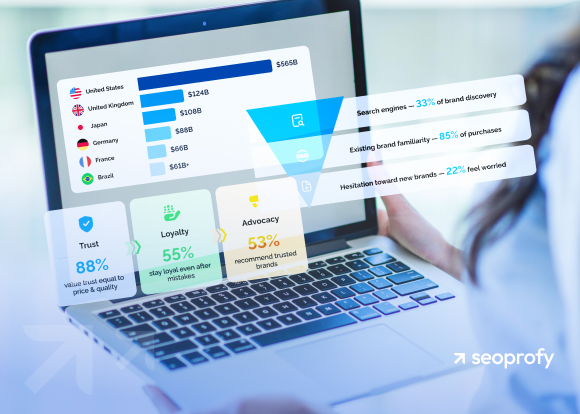In 2025, marketers face new challenges and opportunities in connecting with their audiences. That’s why we’ve gathered 115 essential digital marketing statistics so you can future-proof your marketing strategy.
Social media proliferation, fast AI development, and many more factors impact buyer behavior and, thus, the tactics marketers use to attract and satisfy their potential and current clients. If you’re wondering, “What’s working in 2026?”, we’re going to answer this question with data from different consumer surveys and industry reports. Let’s look at the latest digital marketing growth statistics to see where this field is headed.
- In 2024, websites, blogs, and SEO accounted for 16% of channels delivering the highest return on investment.
- 91% of marketers reported that SEO enhanced their website performance and helped achieve marketing objectives in 2024.
- 68% of marketing executives confirmed a positive return on their AI investment.
- 62% of consumers accept marketers using generative AI if their experience remains positive.
- 64% of respondents consider email to be their preferred source for data collection.
- 50% of consumers discovered products through social media in 2023, while 59% completed purchases through social channels.
General Digital Marketing Statistics
As digital marketing grows, so do the budgets behind it. The digital marketing statistics below confirm this and reflect some other trends in marketers’ approaches and customer preferences:
- The global digital advertising industry is projected to reach $1.16 trillion by 2030, with a CAGR of 15.4% from 2025 to 2030. (Grand View Research)

- In 2024, websites, blogs, and SEO represented 16% of the channels with the biggest return on investment. (HubSpot)
- The largest segment of marketers (29%) allocated marketing budgets between €50,001 and €100,000 for 2024. (Deployteq)

- While most companies have a strategic approach to digital marketing, 38% still work without one. (Smart Insights)
- Marketers struggle most with two main challenges: bringing in traffic and leads (15%) and staying current with trends (15%). (HubSpot)
- 67.1% of businesses report that remote work has had a positive impact on their digital marketing efforts. (Influencer MarketingHub)
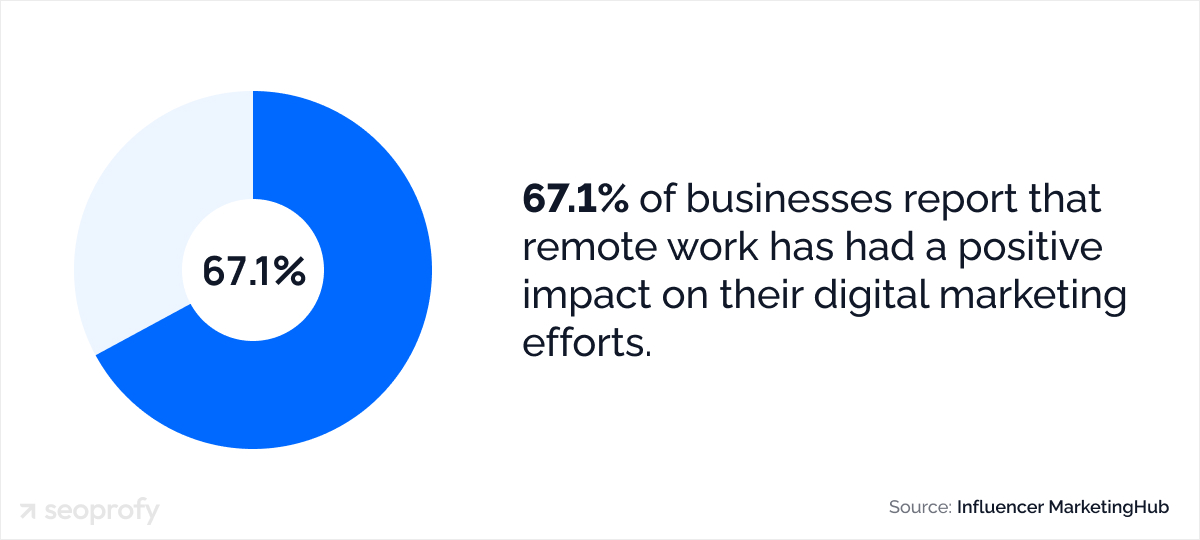
- The most valuable skills for digital marketers today are content creation and storytelling (34.2%) and data analysis and interpretation (25.0%). (Influencer MarketingHub)
- Content marketing is included in the overall strategy of 90% of marketers. (SeoProfy)
- Around 60% of businesses have already embraced AI for marketing purposes. (SeoProfy)
- 55% of customers remember stories better than plain facts. (Carney)
Search Engine Optimization Statistics
According to SEO statistics, search engines continue to be the first stop for consumers with questions, problems to solve, and products to buy. But search has gotten smarter, and it’s now less about keyword stuffing and more about answering real questions searchers have. Overall, SEO remains the steady backbone of digital marketing success. The digital marketing statistics below prove it:
- As of January 2025, Google dominates the global search market, with 89.62% of traffic across all devices, while Bing accounts for only 4.04%. (Statista)
- The United States accounts for 26.94% of all Google’s web traffic. (SeoProfy)

- 72% of people use Google search when looking for local businesses. (SeoProfy)
- 91% of marketers said SEO helped improve their website performance and marketing objectives in 2024. (SeoProfy)
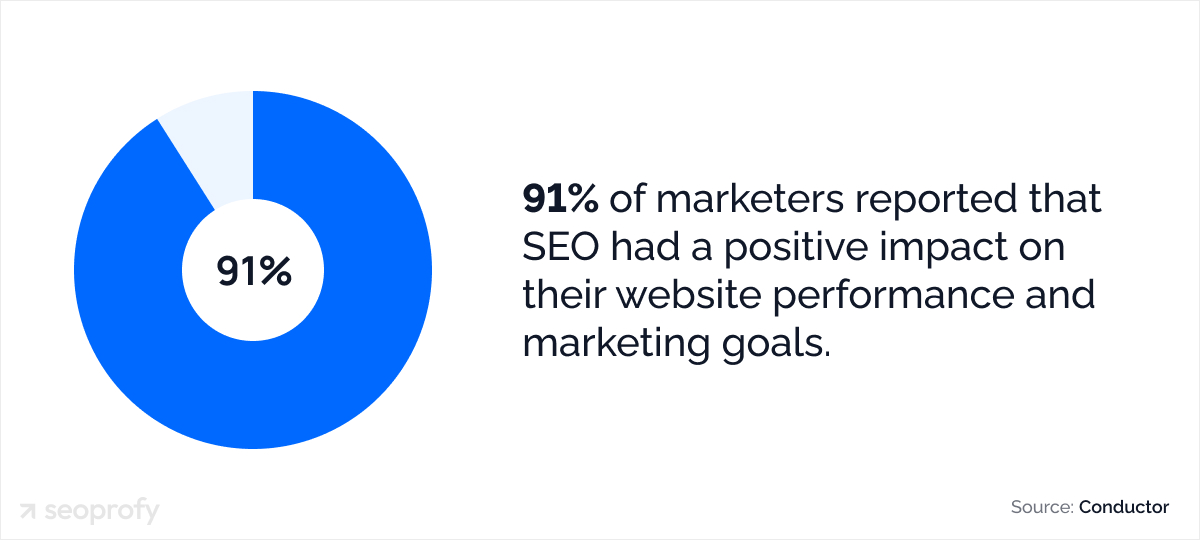
- Focus areas that SEO professionals worldwide prioritize are content strategy/production (13.5%) and data analysis (10%). (Statista)
- In 2024, SEO experts identified their biggest challenges as budget constraints (12.2%), increased search result competition (11.1%), and difficulties in client relationships (10.8%). (Search Engine Journal)
- 24.2% of respondents said Google’s algorithm updates “helped my SEO efforts a lot,” while 9.5% said they “reduced my SEO efforts a lot.” (Search Engine Journal)
- Professionals report that the biggest SEO misconceptions they face are that “SEO is a quick fix” (24%), “SEO is all about keywords” (20.8%), and “black hat SEO techniques work” (14.2%). (Search Engine Journal)
- The three most significant factors disrupting SEO performance today are generative AI (21%), E-E-A-T (13.5%), and automation tools (10.7%). (Search Engine Journal)
- AI tools help 38% of marketers streamline their SEO processes. (Semrush)
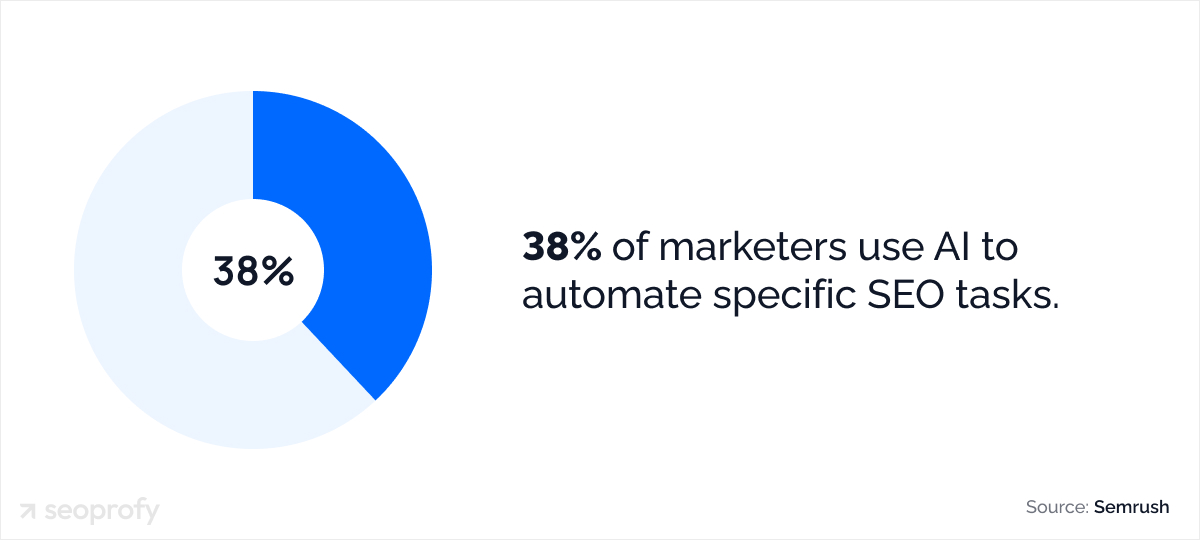
- 63% of respondents saw improvements in organic traffic, visibility, or rankings after implementing AI Overviews (AIO). (Search Engine Journal)
- The SEO software market is projected to grow by $13.73 billion, expanding at a CAGR of 14.34% from 2023 to 2028. (Technavio)
- The most popular SEO tools are Google Search Console, which is used by 93% of respondents; Screaming Frog, which is used by 88%; and Semrush, which is used by 67%. (Aira)
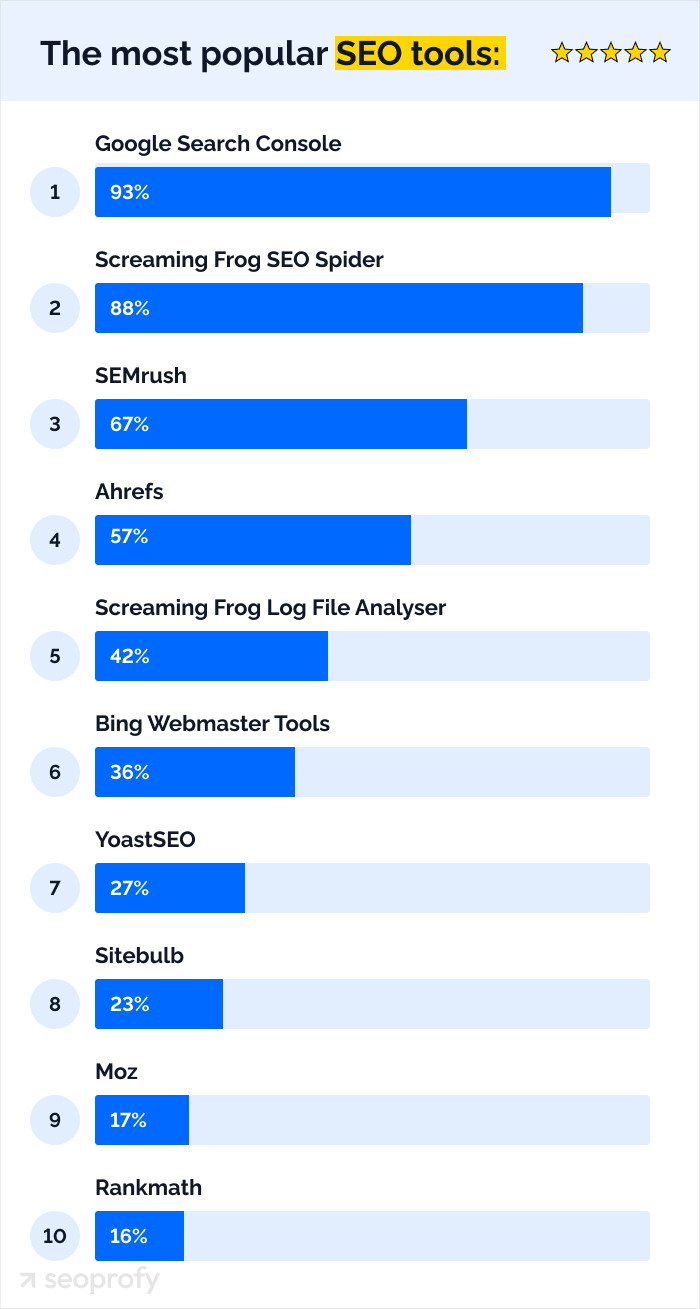
- Most web development or IT teams (61%) complete SEO requests within two weeks. (Search Engine Journal)
- SEO problems typically remain hidden for at least four weeks, costing businesses up to $75,000. (Search Engine Journal)
Pay-Per-Click (PPC) Advertising Statistics
What makes PPC so effective? You reach people exactly when they’re looking for what you offer, and you can achieve this goal by setting up a PPC campaign in just a few clicks. Thus, PPC marketing continues to be the choice of businesses that prefer fast exposure. Here are some facts so you don’t just take our word for it:
- Paid channels are the main digital marketing strategy for B2B marketers; 84% utilize them in their marketing efforts. (Hostinger)
- Data from 119 companies shows PPC generates a 4x return on investment. Yet, SEO produces twice that amount. (SeoProfy)
- About 80% of businesses depend on pay-per-click advertising to grow their businesses. (Cropink)
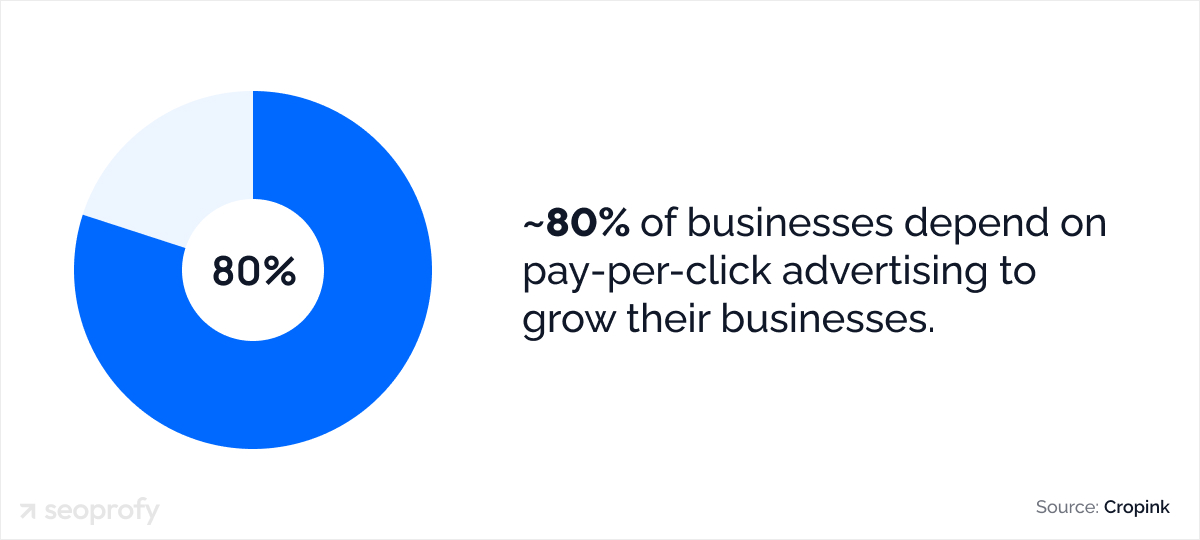
- The goals for PPC campaigns in 2024 were efficient growth (72% among the 1,131 respondents), trying to get more volume out of the same budget (19%), aggressive growth (7%), and decreased spending (2%). (PPCsurvey)
- When it comes to PPC campaign management complexity, 49% report increased difficulty compared to two years ago, 16% find it easier, and 35% see no significant change. (PPCsurvey)

- In 2023, Google generated approximately $264.6 billion in advertising revenue. (Statista)
- In December 2024, the marketing and advertising industry in the United States experienced the highest average monthly CPC in Google Ads search advertising, reaching $7.66. (Statista)
Website Statistics
Consumers judge businesses in seconds based on their websites, and creating the right impression remains a challenge for businesses for different reasons. Here are some website stats to pay attention to when developing a digital strategy:
- Currently, around 1.2 billion websites exist globally, though just 17% are active, while 83% are inactive. (Siteefy)

- When asked why people leave websites, 88.5% of respondents blamed slow loading speeds, and 73.1% cited poor mobile responsiveness. (SeoProfy)
- Websites that appear first in search results typically load in 1.65 seconds. (Backlinko)
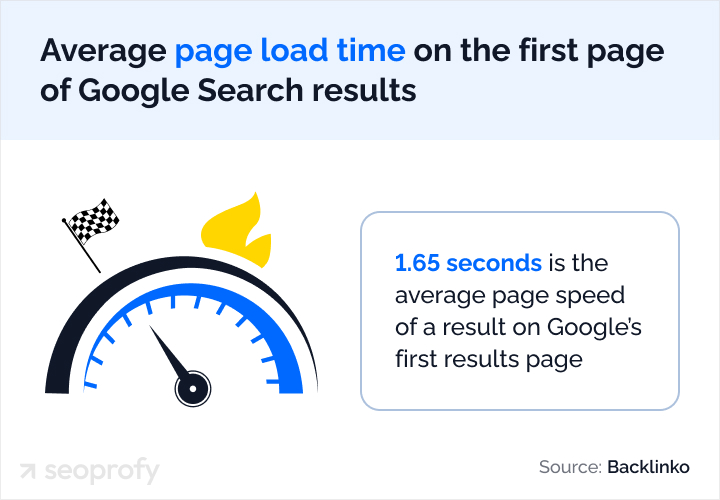
- Well-optimized landing pages can achieve conversion rates of up to 11.45% or more, significantly surpassing the average of 2.35%. (Tenet)
- Over half of businesses (57%) receive most of their sales orders through their websites. (DynamicWeb)
- The average time spent on a page view is between 52 and 54 seconds. (Agency Analytics)
- The top five metrics that web analysts track to measure website performance are sales/leads/conversion rates (31%), total monthly visitors (30%), click-through rates (28%), search traffic (26%), and bounce rates (21%). (HubSpot)
- Six in ten marketing leaders feel their web technology stack doesn’t meet their needs. (Webflow)
- About 93% say their company leaders think they need to enhance their website. (Webflow)
- Americans respond to website cookie notifications in various ways: 32% agree, 15% accept but customize settings when possible, 31% make different choices depending on the site, and just 9% reject all cookies. (Statista)
Content Marketing Statistics
Value beats volume every time in content marketing. Google’s E-E-A-T guidelines define whose content will rank better among millions of web pages. The digital marketing statistics below show that what stays essential is understanding the audience you create content for and addressing their needs, showing your professionalism:
- The content marketing industry will grow by $539.3 million, with a CAGR of 13.9% from 2024 to 2029. (Technavio)

- In early 2024, marketing and media leaders reported that 41% had raised their content marketing budgets during the past year, while 45% expected to increase content spending in the next 12 months. (Statista)
- 87% of B2B marketers said content marketing let them build brand awareness, 74% generated leads with it, 62% used content to nurture prospects, 52% improved existing customer loyalty, and 49% increased sales through content. (CMI)
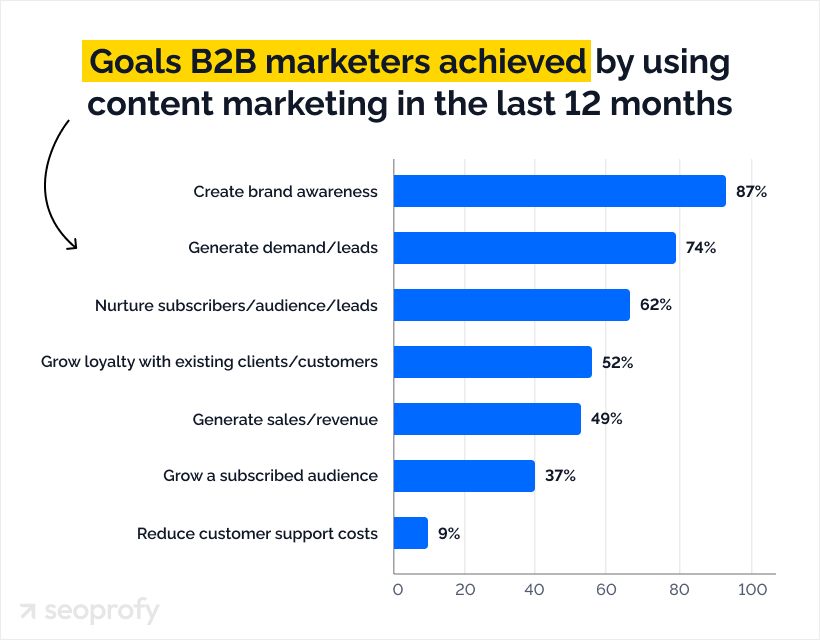
- As of August 2024, 82% of B2B content marketers believed knowing your audience leads to content marketing success, 77% said quality content matters most, and 70% named industry expertise as a success factor. (Statista)
- About 25% of marketers plan to produce content that reflects their values. (SeoProfy)
- The main content marketing issues marketers face are coming up with fresh ideas for new content (16%) and creating engaging content (16%). (HubSpot)
- AI tools help 68% of businesses boost their content marketing ROI. (SeoProfy)

- According to 2024 content marketing stats, 61% of marketing and media leaders partially understood how their content performed, 26% had complete clarity about performance, and 13% had no clarity at all. (Statista)
- About 41% of shoppers prefer content they can interact with when learning about brands. (Carney)
AI Digital Marketing Statistics
When marketers embrace AI, they are experiencing outcomes that seemed unattainable just a few years ago. Digital marketing campaigns have become more intelligent, targeting has become more precise, and creative work is happening at a rapid pace. Yet, marketers still may worry about overreliance on AI, potential bias in algorithms, and keeping brand voices genuine. Here’s what digital marketing statistics illustrate:
- By 2030, AI marketing tools are predicted to influence 45% of the world’s economy. (Edelman)
- 68% of marketing executives said they got a return on their AI investment. (HubSpot)
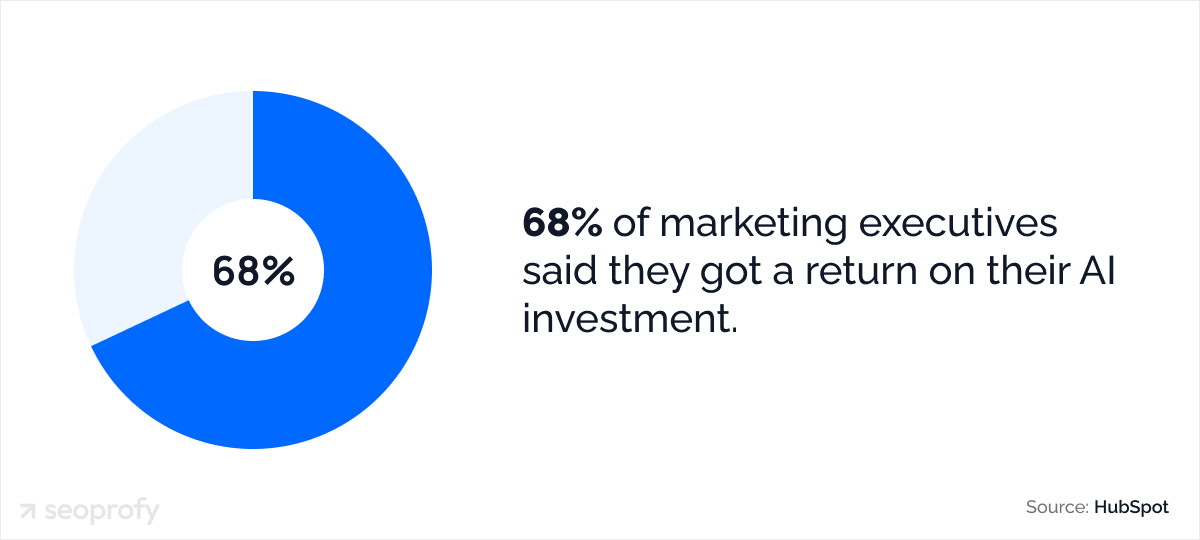
- 77% of marketers claimed AI helped them create more personalized content. (HubSpot)
- 88% of marketers think their companies must adopt more AI to keep up with customers and competitors. (Edelman)
- About 37.5% of marketing teams have adopted AI tools for researching keywords. (SeoProfy)

- Marketers have mixed feelings about how AI may affect employment. 60% are somewhat worried, and 5% are very worried. Yet, 35% aren’t concerned about AI replacing marketing roles. (Kaltura)
- The biggest AI adoption challenges are data security and integration issues (50% each), ethical and privacy concerns (45%), and subscription cost and lack of competent AI tools (31% each). (Kaltura)
- When it comes to AI concerns for B2B marketers, 49% worry about tone of voice problems. 43% question content quality. 27% fear search penalties, and 27% worry about inaccurate facts. (Kaltura)
- Generative AI video technology is expanding by 20% each year. By 2027, investments in this field should reach $143 billion. (Edelman)
- 80% of consumers said they need to know if they’re speaking with a real person or a bot. (Adobe)

- 62% of people don’t mind marketers using generative AI if their experience stays positive. (Plann)
- About 73% of consumers express trust in content produced by AI. (SeoProfy)
Lead Generation Statistics
Lead generation is directly tied to revenue, and digital marketing statistics highlight that this approach continues to be a top priority for businesses. Some companies have shifted to pursuing fewer, higher-quality leads, while others cast wider nets via cold-calling campaigns. AI is being methodically introduced into both outbound and inbound marketing processes, too. Here are some stats that highlight these and other trends in lead generation:
- Lead generation ranks as the #2 pain point for 33% of marketers. Only revenue growth ranks higher (46%). (HubSpot)
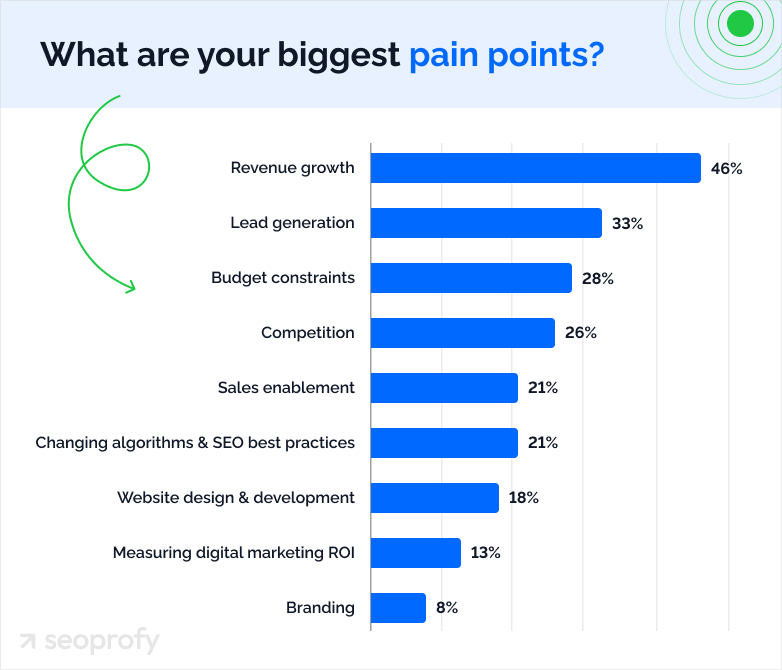
- 37% of B2B companies still rely on cold calling. (Dux-Soup)
- 79% of sales leaders believe that sales enablement content plays a crucial role in closing deals. (Perform)
- Almost all B2B companies (97%) generating leads through social media prefer LinkedIn. (Dux-Soup)

- When it comes to AI’s impact on lead generation, 41% of marketers saw increases that might be attributed to their AI adoption, while 7% are confident that AI directly affected their lead generation improvements. (Kaltura)
Email Marketing Statistics
Email marketing isn’t going anywhere, as it still delivers remarkable results for businesses that do it right. These days, personalization goes way beyond just inserting someone’s first name. Automated email sequences can guide potential customers smoothly along their buying journey without your constant intervention.
Also, according to the marketing statistics for small businesses and big corporations, email proves to be an exceptional source of high-quality lead data. The way people interact with your campaigns — what they click, what they open, and how they respond — is a little sign pointing to who’s interested in your offerings and worth reaching out to further. Take a look at the numbers that reveal the overall state of email marketing in 2026:
- 63% of businesses recognize email’s importance, while nearly a third consider it to be instrumental to their success. (Newoldstamp)

- Email marketing is one of the top-performing channels, with a 42.3% excellent/good rating. (Newoldstamp)
- In the upcoming year, 36% of marketers aim to expand their automated email strategies. (Litmus)
- Email is one of the most popular sources for data collection (64%). (Deployteq)
- Marketers assess their email campaign success through revenue generated (45%), return on investment (43%), and engagement metrics (38%). (Ascend2)
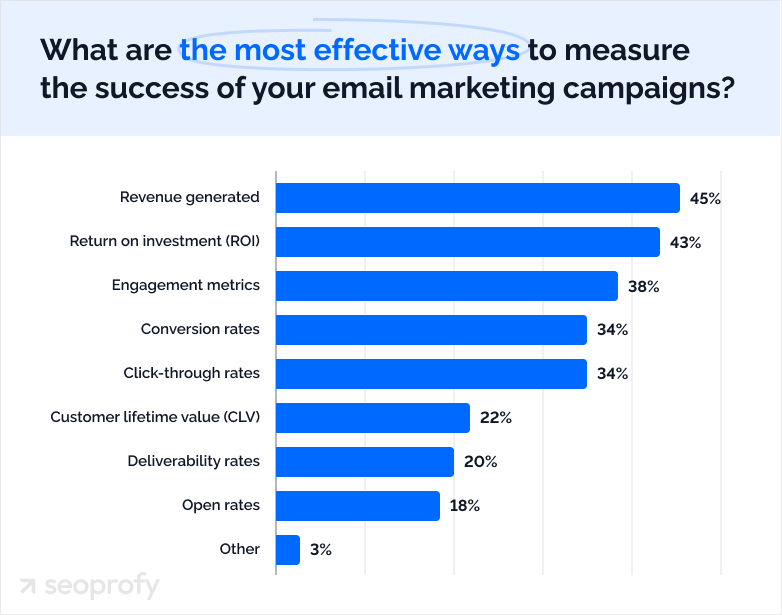
- The key obstacles in email marketing automation are avoiding spam filters and ensuring deliverability (48%) and creating engaging automated content and maintaining subscriber engagement over time (45% each). (Ascend2)
- Newsletters have an average open rate of 40.08%, while triggered emails have an average open rate of 45.38%. (GetResponse)
- Newsletters have an average click-through rate of 3.84%, while triggered emails have 5.02%. (GetResponse)
- In 2023, welcome emails achieved an impressive average open rate of 83.63%. (GetResponse)
Social Media Marketing Statistics
Social media is where your target audience lives its digital lives, so it’s an excellent channel you can use to increase your brand recognition. These are now full-fledged channels for advertising and selling, with corresponding tools for these activities, not merely personal platforms, as they were in mid-2010 when social media was predominantly used for sharing daily vacation photos. Here are some digital marketing statistics to prove these statements:
- In 2024, Internet users globally were spending less time on social media — 143 minutes daily compared to 151 minutes in 2023. (Statista)
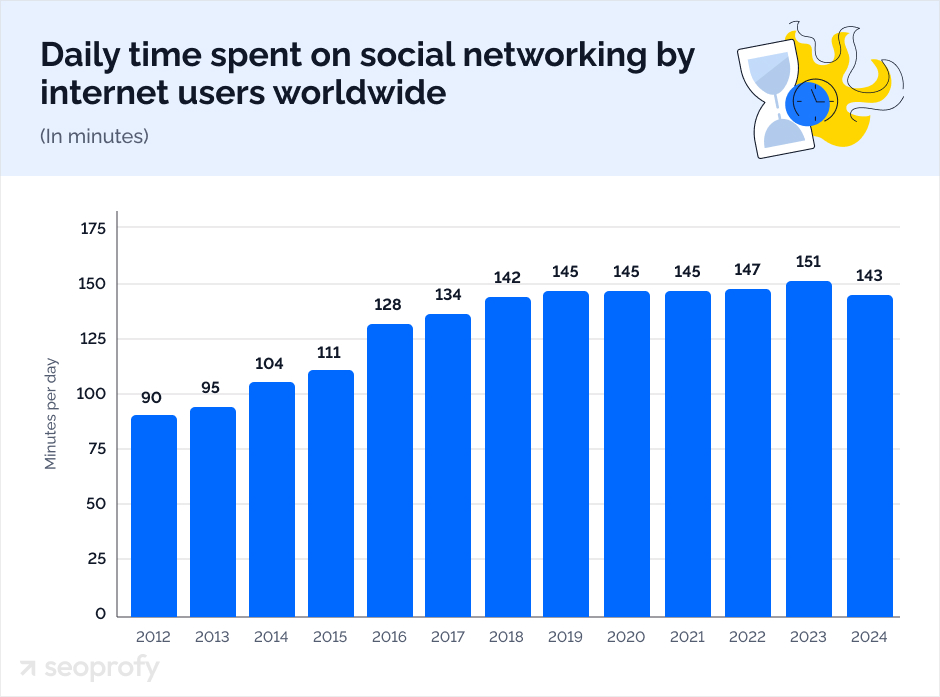
- User presence across social media platforms varies: Instagram (84%), Facebook (83%), YouTube (78%), TikTok (68%), Twitter/X (48%), Pinterest (43%), LinkedIn (39%), and Threads (15%). (SproutSocial)
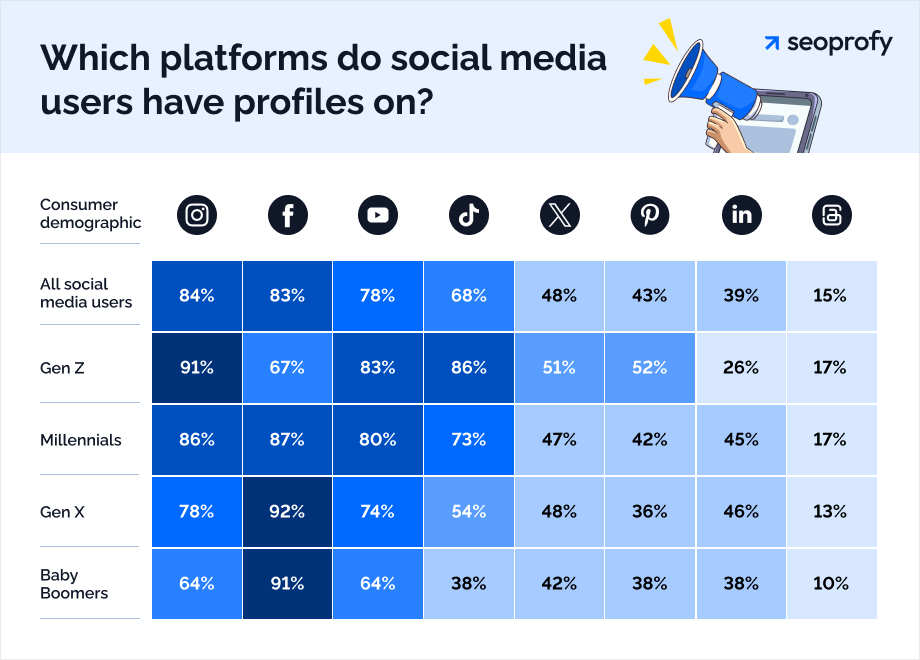
- Brand exposure varies across social platforms: TikTok (73%), YouTube (70%), Instagram (69%), Threads (67%), X/Twitter (67%), LinkedIn (65%), and Facebook (63%). (Social Media Examiner)
- YouTube ranks as the best-performing social media platform for 22% of marketers surveyed. (SeoProfy)
- 51% of marketers use YouTube, and 59% plan to increase their YouTube activity. Additionally, 63% want to improve their organic video marketing skills on YouTube. (Social Media Examiner)
- 50% of consumers used social media to discover products in 2023. Even more, 59% made purchases through social channels. (Semrush)
- 53% of U.S. users remain loyal to the brands they follow on social media. (Carney)
- Most social media users (66%) say brands engage them best with “edutainment” — content that both teaches and entertains. (SproutSocial)
TikTok Marketing Statistics
TikTok is indeed a marketing phenomenon. Today, you can find more than just teenage dance trends. What makes TikTok special is that authenticity wins over polished content, creativity beats big budgets, and trends can explode overnight, creating massive opportunities for brands to become more visible and increase sales. Here’s what the numbers tell us overall:
- The percentage of Americans using TikTok weekly has steadily increased, from just 5% in 2021 to 21% in 2024. (YouGov)

- TikTok users trust influencer recommendations more than average Americans — 47% of weekly TikTok users trust products that celebrities or influencers suggest, compared to just 27% of the general population. (YouGov)
- People who use TikTok weekly are more likely to do spontaneous shopping (59%) compared to the average person (45%). (YouGov)
- While most TikTok users (86%) know about TikTok Shop, far fewer actually trust the sellers on this platform. (YouGov)

Instagram Marketing Statistics
What’s working on Instagram today? Reels and short videos get the most eyes and engagement. Shopping tags and checkout buttons make purchasing easy since customers don’t even have to leave the app. Partnerships with creators who have loyal followers help brands earn the trust of their audiences. Here are some Instagram usage stats and other digital marketing statistics related to this social network:
- In March 2024, Instagram received seven billion visits, which makes it one of the most popular websites worldwide. (Statista)
- Instagram continues to lead in social media, with its audience increasing by 25.3% from 2023 to 2024. (Statista)
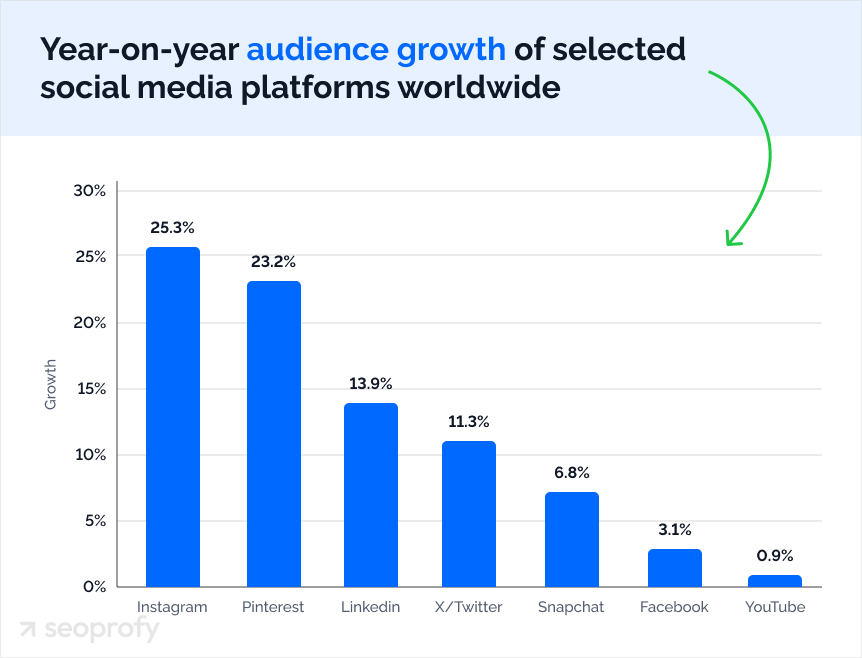
- As of April 2024, Instagram’s highest penetration rates are in Bahrain (95.6% of the population), Kazakhstan (90.8% of the population), the United Arab Emirates, Turkey, and Brunei (all over 85% of the population). (Statista)
- Top Instagram strategies by ROI are generating engaging content (44%), facilitating audience interaction (40%), and preserving a uniform brand voice and visual style (32%). (HubSpot)
- Instagram Shopping tools are used by 37%. (HubSpot)
- 13% use Instagram for customer service. (HubSpot)
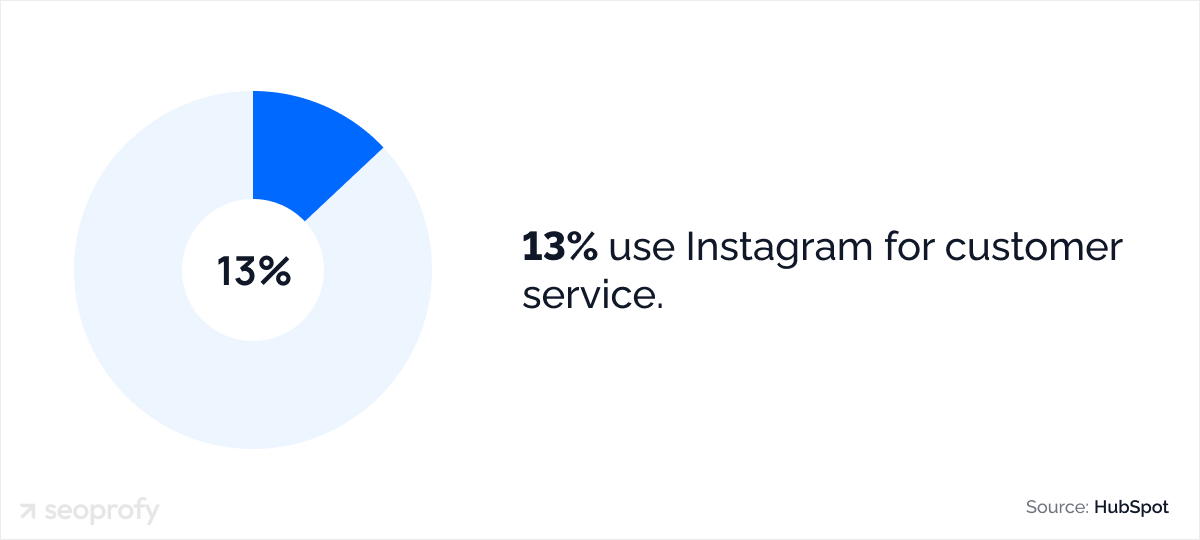
Facebook Marketing Statistics
Facebook may not be the new kid on the block, and despite predictions of its decline, this platform continues to bring results for businesses of all sizes. Look at the statistics that verify the trend:
- Approximately 16.6 billion visits were recorded on Facebook.com in March 2024. (Statista)
- Facebook’s user base is dominated by India, which has 378 million users. Following closely are the United States (193.8 million), Indonesia (119.05 million), and Brazil (112.55 million). (Statista)
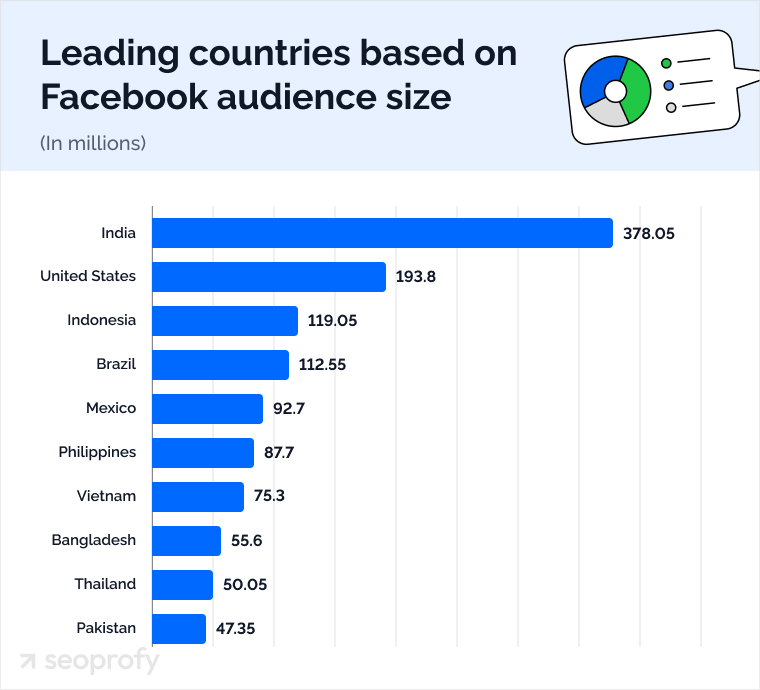
- 15% of Facebook’s in-feed content is driven by AI recommendations. (Plann)
Social Media Advertising Statistics
Ads do a fantastic job on these platforms, too. You can target exactly who you want based on their behavior, interests, and demographics. Plus, the analytics show you what’s working in real time.
- The social media advertising market is forecast to expand to six billion users by 2030. (Statista)
- A comparative analysis of ad spending in the social media advertising market across 20 regions shows the United States leads with $72.3 billion, closely followed by China — $71.4 billion, while Thailand represents the lowest spending — $501.27 million. (Statista)
- 16% of consumers appreciate brands that deliver personalized social media advertisements tailored to their interests and needs. (Adobe)

- Video views (26.1%) and engagement (21.3%) are the most-used campaign objectives for advertisers on TikTok, followed by traffic (17.7%) and reach (16.1%). (TikTok Ads 2024 Study)
- In 2023, 80% of global marketers used Instagram as an advertising platform for their businesses. (Statista)
- Facebook generated 114 billion U.S. dollars in ad revenue during 2022. It’s expected that its advertising income will surpass 127 billion U.S. dollars by 2027. (Statista)
- Marketers have different Facebook ad campaign objectives: interactions (42.4%), traffic (32.6%), leads (9.6%), brand recognition (7.9%), sales (7.4%), and app promotion (0.1%). (2024 Facebook Ads Study)
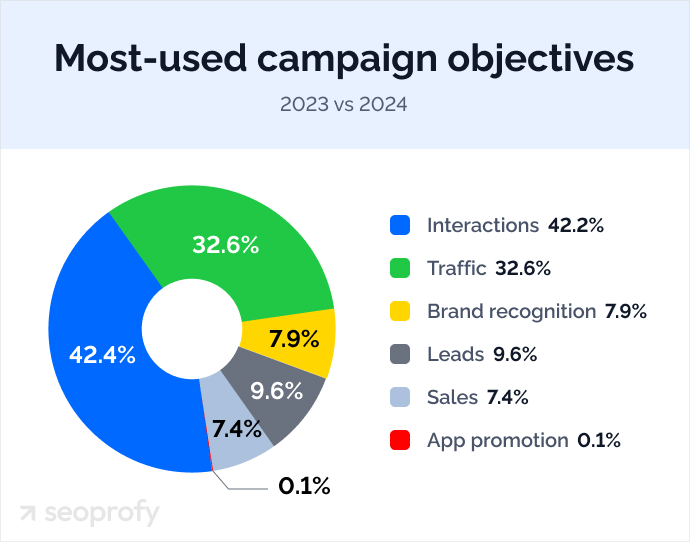
- In 2024, Great Britain had the highest average cost per click (CPC) — $0.38 —while the United States’ average CPC was $0.25. (2024 Facebook Ads Study)
Influencer Digital Marketing Statistics
According to digital marketing statistics, when people see recommendations from creators they trust, they’re more likely to take action. It’s like word-of-mouth but for the digital world. These days, micro- and nano-influencers often do better than celebrities, and brands are leaning toward long-term partnerships instead of just one-off posts.
- 21% of respondents invested more than half of their total marketing resources into influencer marketing efforts in 2024. (CreatorIQ)
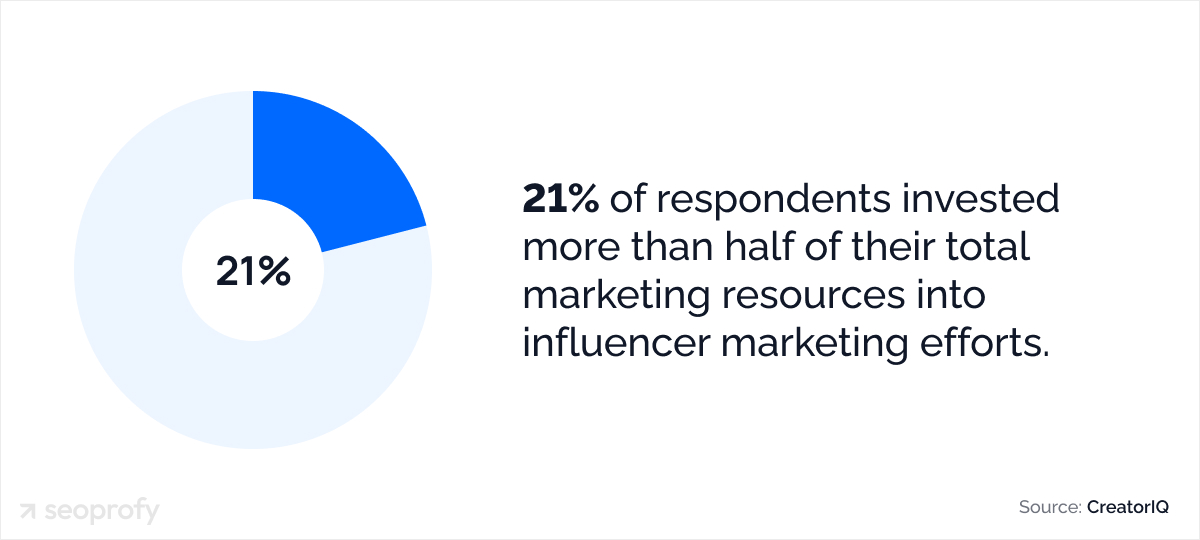
- The top influencer marketing strategies are user-generated content on owned media (76%), gifting/seeding (66%), and affiliate marketing and sponsored digital ads (60% each). (CreatorIQ)
- 2024 has marked a turning point in influencer marketing — TikTok (56%) has surpassed Instagram (51%) and has become the primary platform for brands and content creators to reach their marketing goals. (Carney)
- After watching creator content, 78% of TikTok users have made a purchase inspired by the product featured in the video. (Plann)

- In 2023, Instagram mega-influencers with over one million followers commanded an average minimum price of $1,210 per post. (Statista)
Video Content Marketing Statistics
Video content blends visuals, sound, and emotion to tell stories that resonate. Even despite numerous short-form videos that make people constantly scroll their feeds, a well-crafted video can stop thumbs and make users explore the brand.
Plus, given the popularity of social media and influencer marketing, the combination of these three elements — video content, social platforms, and creator partnerships — can be highly suitable for businesses that want to maximize their digital marketing effectiveness. Here’s what you should know about video content marketing in 2026:
- A majority of marketers (53%) spend one-third or less of their budget on video content. (Wyzowl)
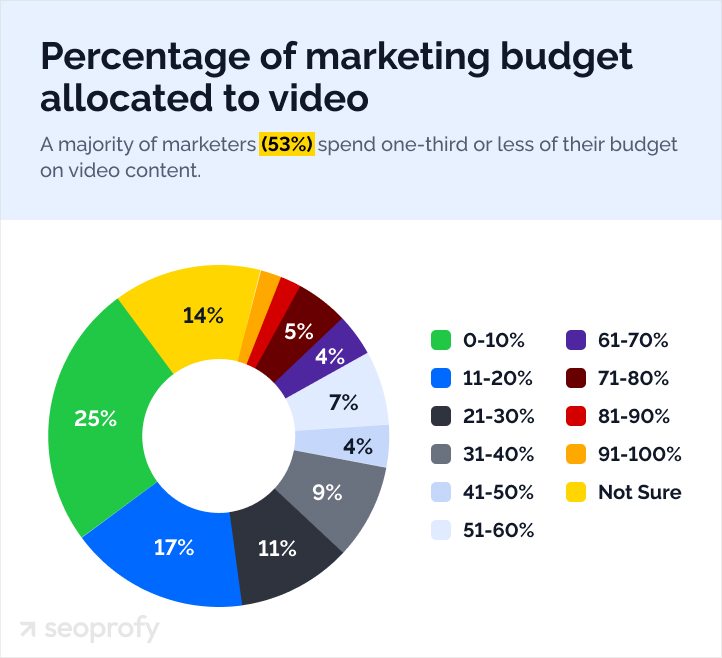
- In August 2024, 61% of B2B content marketers, primarily from North America, plan to increase their video content investments in 2025. (Statista)
- Video production costs prevent 11% of marketers from incorporating video into their strategy. (Wyzowl)
- 64% of consumers purchase a product after watching a branded social media video. (Carney)
Diversify Your Strategy for Maximum Impact
This was a brief glance at the growth of digital marketing. These digital marketing stats show there are many ways you can attract clients online. However, SeoProfy advises against concentrating all your efforts in one area. Experiment with different approaches and combine them for the best results.
For instance, consider creating both short-term and long-term content that serves various purposes, whether it’s for buyers or just for sharing knowledge and building authority. Or don’t rely just on PPC ads. Welcome SEO, too, so you can future-proof your visibility in search results, especially if you can’t consistently invest in paid ads.
The digital marketing statistics we’ve explored demonstrate SEO’s impact. If you’re ready to make the most out of search engine optimization, SeoProfy is here to help! Reach out, and we’ll be happy to get you into that impressive 91% of marketers who say SEO has improved their website performance and marketing goals.







